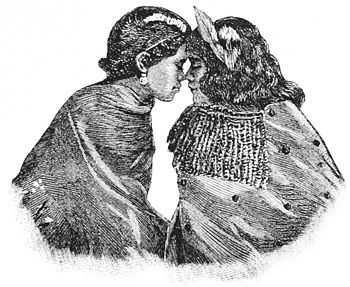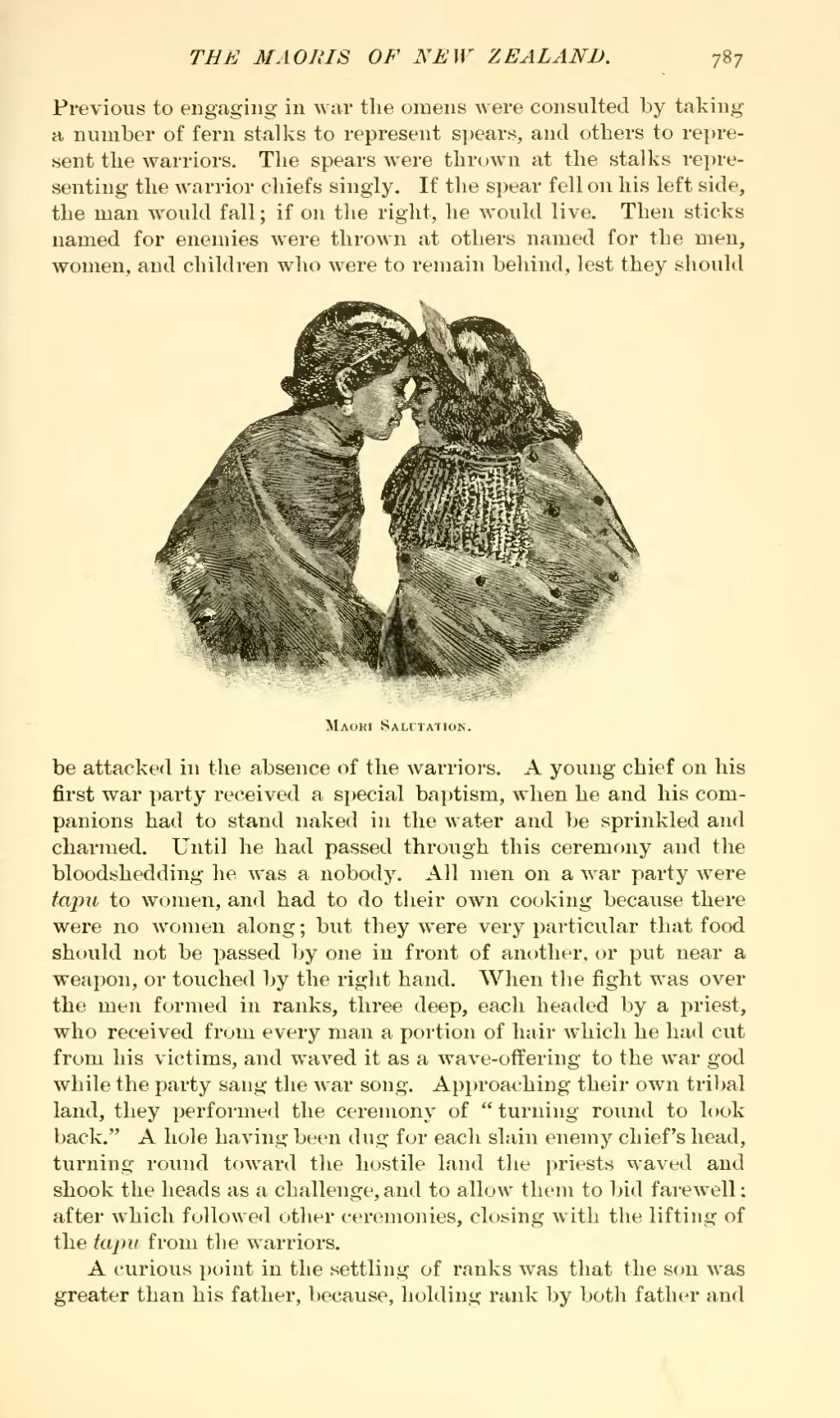Previous to engaging in war the omens were consulted by taking a number of fern stalks to represent spears, and others to represent the warriors. The spears were thrown at the stalks representing the warrior chiefs singly. If the spear fell on his left side, the man would fall; if on the right, he would live. Then sticks named for enemies were thrown at others named for the men, women, and children who were to remain behind, lest they should

Maori Salutation.
be attacked in the absence of the warriors. A young chief on his first war party received a special baptism, when he and his companions had to stand naked in the water and be sprinkled and charmed. Until he had passed through this ceremony and the bloodshedding he was a nobody. All men on a war party were tapu to women, and had to do their own cooking because there were no women along; but they were very particular that food should not be passed by one in front of another, or put near a weapon, or touched by the right hand. When the fight was over the men formed in ranks, three deep, each headed by a priest, who received from every man a portion of hair which he had cut from his victims, and waved it as a wave-offering to the war god while the party sang the war song. Approaching their own tribal land, they performed the ceremony of "turning round to look back." A hole having been dug for each slain enemy chief's head, turning round toward the hostile land the priests waved and shook the heads as a challenge, and to allow them to bid farewell: after which followed other ceremonies, closing with the lifting of the tapu from the warriors.
A curious point in the settling of ranks was that the son was greater than his father, because, holding rank by both father and
